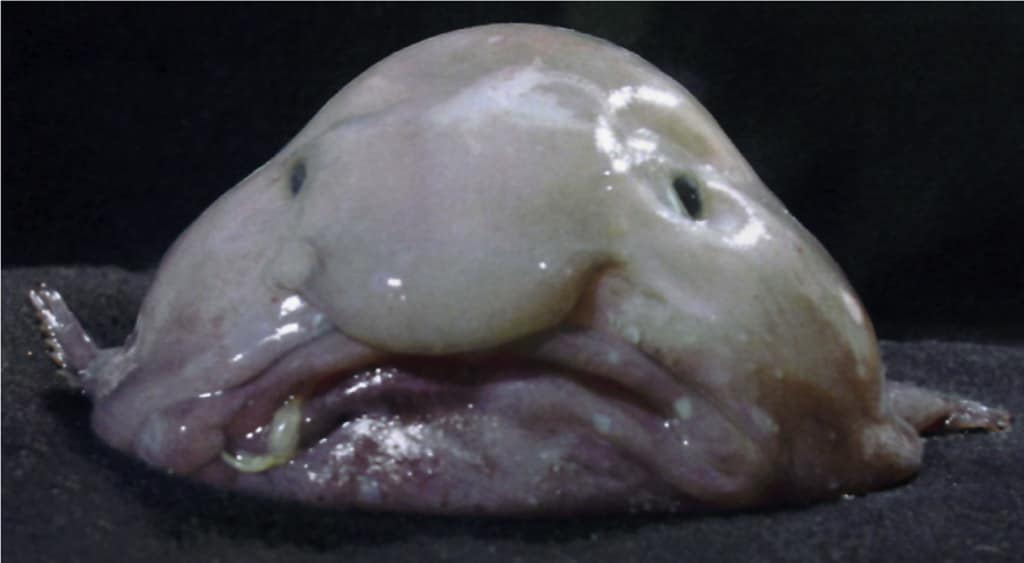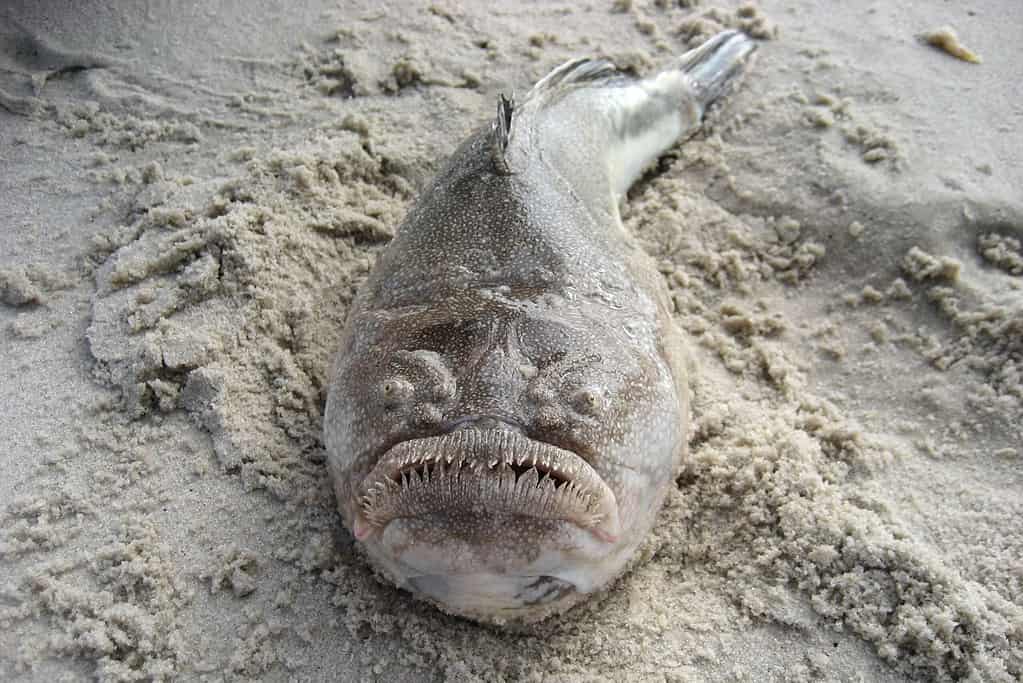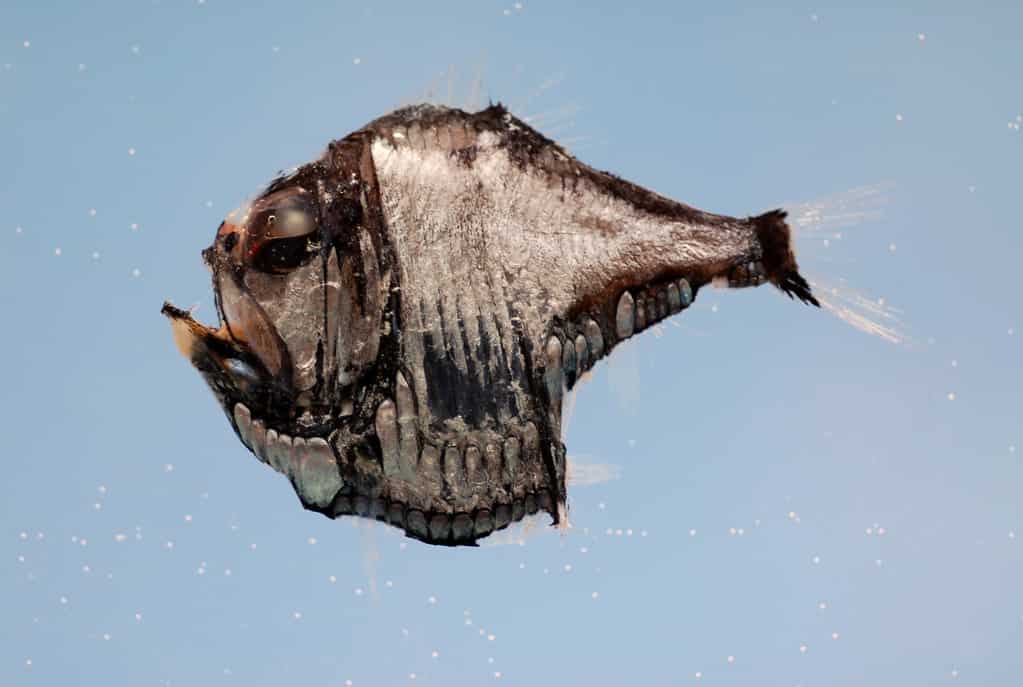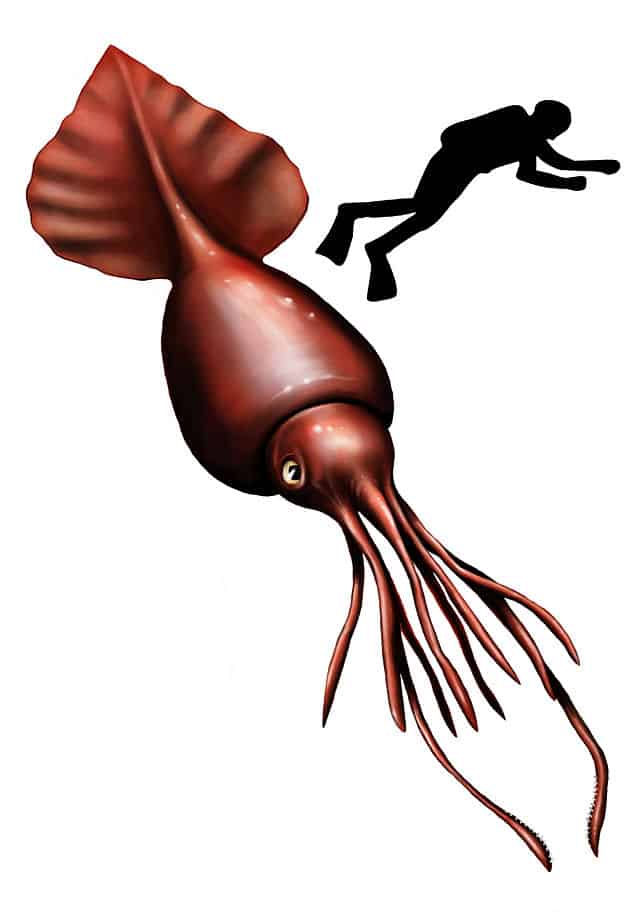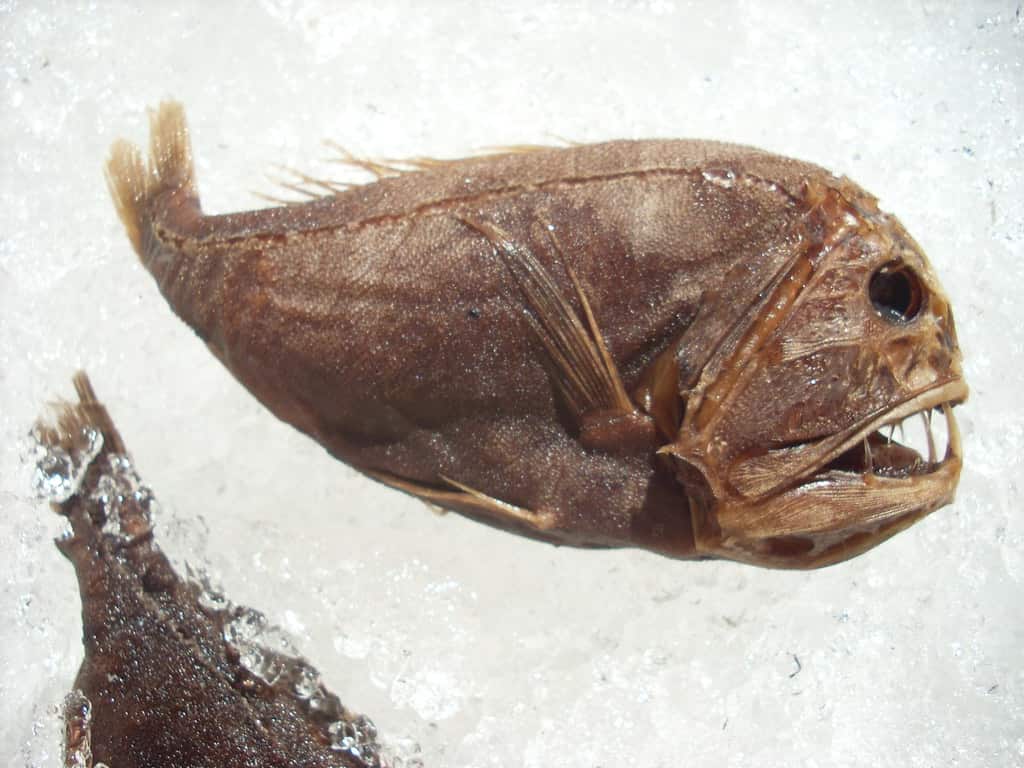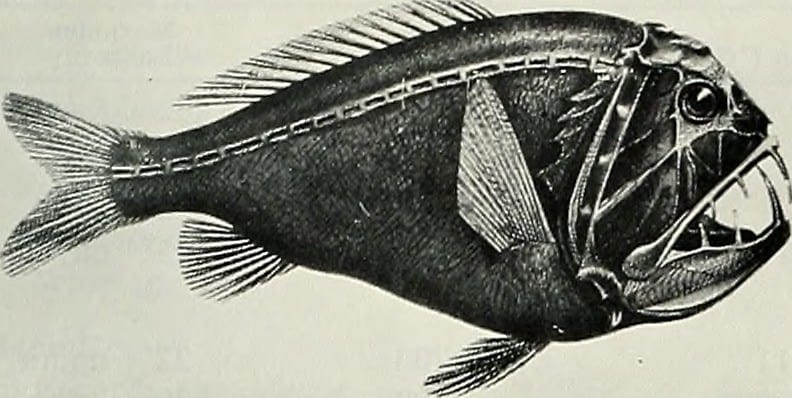When most of us picture the ocean, we imagine turquoise waves, colorful reefs, and shoals of darting fish. But that’s only the surface. Venture deeper, far below the last reach of sunlight, and you enter a world that feels almost alien. Here, under crushing pressure, in freezing darkness, life has not only survived but flourished in astonishing, often bewildering forms.
The deep sea has a reputation for producing “monsters.” Headlines describe its inhabitants as “freakish” or “terrifying.” But that framing misses the point. These animals aren’t curiosities from a horror show; they are masterworks of evolution, honed by millions of years to endure a realm where few others could. Sure, they look silly on the surface, but from the anglerfish’s glowing lure to the ghostly body of the comb jelly, each adaptation is a survival strategy.
Every protruding jaw, every glimmering lure, every transparent body part tells a story of persistence in the planet’s harshest habitat. Instead of gawking at them as oddities, maybe we should look closer—and recognize them for what they truly are: some of nature’s most extraordinary survivors.
Here are just a few of the remarkable creatures that haunt the ocean’s depths.
1. The Angler fish
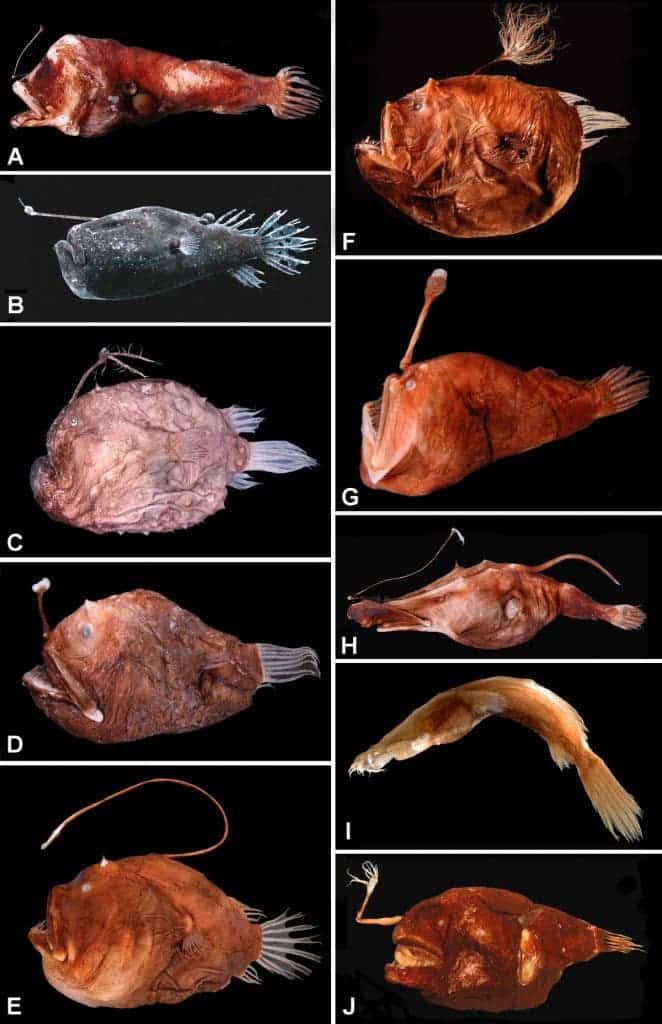
You’ve probably seen this creature before—it’s become the unofficial mascot of the abyss. Not all anglerfish live in the deep, but many species thrive at depths where pressure would crush most animals. Their bodies reflect that: some are laterally flattened for life in the open water, others vertically compressed for bottom-dwelling.
Their most famous feature is the glowing lure that dangles from their heads. In a realm with no sunlight, that bioluminescence is irresistible to unsuspecting prey. But the anglerfish isn’t making the light on its own. It relies on a partnership with bacteria, which produce the glow through a symbiosis scientists still don’t fully understand.
If that weren’t strange enough, anglerfish have an even more astonishing claim to fame: their reproductive strategy. When researchers first collected specimens, they were puzzled to find only females—each with what looked like a parasite attached to her body. Those “parasites” turned out to be males.
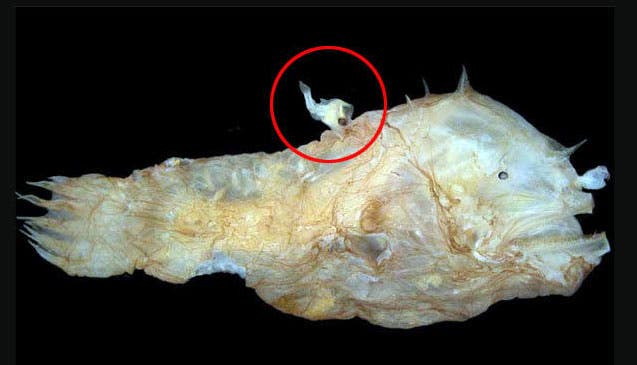
Male anglerfish are tiny compared to females, and their only mission in life is to find a mate. Once they do, they bite into her skin and fuse with her, sharing her blood supply. Over time, the male shrinks until little remains but his gonads, ready to supply sperm whenever the female needs it. This extreme form of sexual dimorphism—called parasitic reproduction—ensures that when she’s ready to spawn, a partner is always available in the vast emptiness of the deep.
Not every anglerfish species uses this strategy, and scientists still debate why it evolved in some but not others. One idea is that because females are rare and widely dispersed, males that permanently attached themselves had a better chance of passing on their genes than those that remained free-swimming. In the deep sea, efficiency is everything and the anglerfish has perfected one of the strangest solutions evolution ever produced.
Some species take their deception even further: their lure doesn’t just glow, it can twitch and squirm like a worm or shrimp, mimicking prey. Recent genetic studies also suggest anglerfish have reprogrammed their immune systems so females don’t reject the fused males — an evolutionary hack that makes their bizarre mating possible.
2. The blobfish
Unofficially declared “the ugliest animal in the world”, the blobfish is actually really interesting. They inhabit the deep waters of Australia, New Zealand, and Tasmania, living at depths of 600 to 1200 meters (2000 – 4000 ft). At that depth, the pressure is tens of times bigger than at the surface and therefore gas bladders, which fish normally use to swim, would be inefficient.
Gas bladders are internal gas-filled organs that contribute to the ability of a fish to control its buoyancy, floating up or down with relative ease. The blobfish found an alternative to that: its flesh is basically a gelatinous mass with a density slightly less than water; this allows the fish to float above the seafloor without expending energy on swimming. He may be lazy, but he’s pretty efficient — and there’s a reason why he looks like that.

When underwater, at immense pressures, the blobfish looks quite different. The pressure keeps its body looking like you see above. When you take it out, it starts to puff up due to the decompression. I’d say, that in its natural habitat, he’s quite a nifty fellow.
In September 2013 the blobfish was voted the “World’s Ugliest Animal”, based on photographs of decompressed specimens, and adopted as the mascot of the Ugly Animal Preservation Society, in an initiative to help preserve animals that were not blessed with what we, humans, deem to be “cuteness”.
The blobfish deserves more. It deserves our appreciation.
The blobfish isn’t a swimmer so much as a drifter, hovering just above the seafloor with almost no effort. Its gelatinous body is a clever way of conserving energy in a world where meals are few and far between. And while we mock its looks, in its natural, high-pressure home it appears far more streamlined.
3. The goblin shark
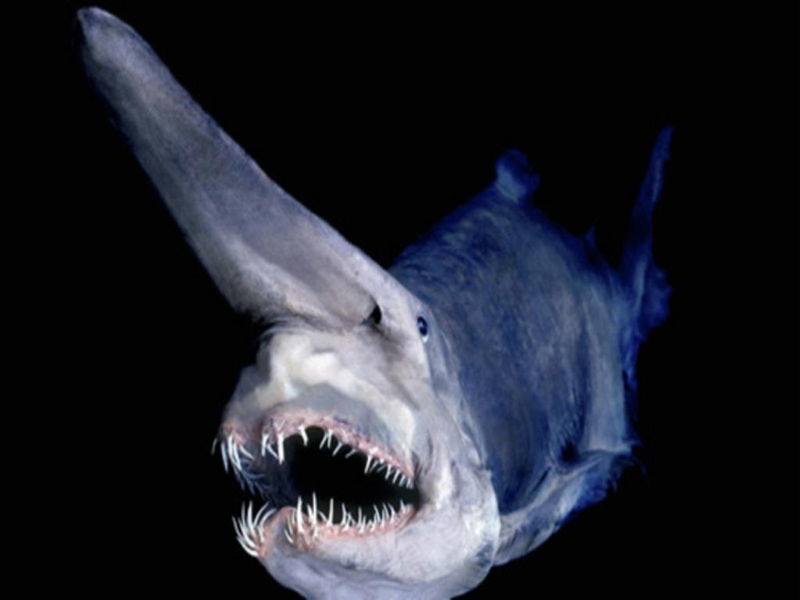
The goblin shark is a very rare and poorly understood animal — arguably the least understood shark species. The goblin shark is the only survivor of a family called Mitsukurinidae, a lineage some 125 million years old. They are quite puzzling creatures, and it’s not the first time we’ve taken a look at the goblin shark.
The goblin shark doesn’t just open its jaws — it launches them forward in a lightning-fast strike, faster than the blink of an eye. This “slingshot feeding” is one of the quickest predatory moves in the deep. Its elongated snout bristles with electroreceptors, letting it sense the faint electric fields of prey buried under sand or mud.
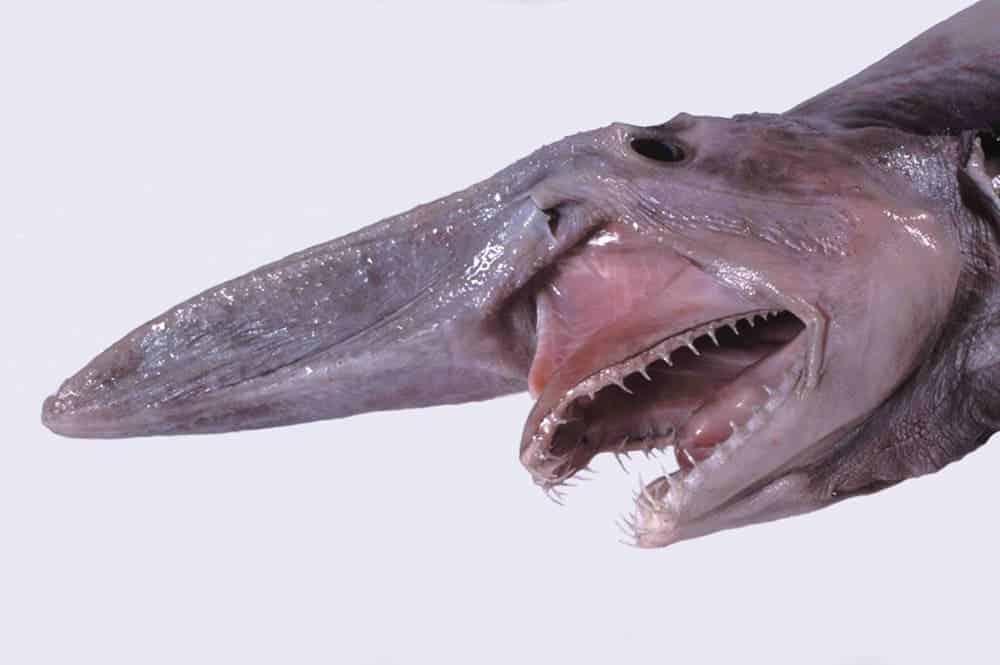
While you could see some resemblance to other shark species, this animal has its own striking particularities. It is usually between 3 and 4 meters long when mature, though it can grow much larger than that (it’s not exactly clear just how much); you shouldn’t worry, however, because they live at over 100 meters deep, with mature specimens living way deeper than that.
Various anatomical features of the goblin shark, such as its flabby body and small fins, suggest that it is sluggish in nature. they have a very reduced skeleton and weak muscles. Therefore it is not a particularly fast swimmer. It’s probably a stalker, relying on ambush tactics to hunt. The long snout appears to have a sensory function, detecting electric fields from other creatures.
They don’t survive on the surface, despite Japanese attempts at keeping them in special aquariums. Hopefully, these attempts will subside.
4. Gulper eel
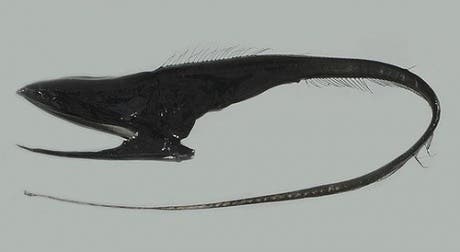
The Gulper eel is another poorly understood species. They are superficially similar to other eel species but have many internal differences. Their most notable attribute is the big mouth — bigger than the rest of the body. The mouth is loosely hinged and can be opened wide enough to swallow an animal much larger than itself; however, it usually only eats small crustaceans.
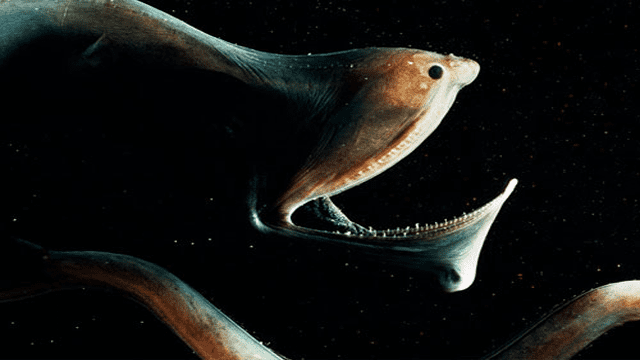
Not much is known about the reproductive habits of the gulper eel. We do know that as they mature, the males undergo a change that causes enlargement of the olfactory organs, responsible for the sense of smell, and degeneration of the teeth and jaws — they give up on some hunting abilities in order to be more successful in finding a mate.
The gulper (or pelican eel) lives deep undersea, at depths between 150-1,800 meters (500 to 6,000 feet). It also has a long whip-like tail that it uses for movement and for communication via bioluminescence. The tail serves as a complex organ with numerous tentacles, that glows pink and gives off occasional bright-red flashes, presumably also to attract prey.
5. Barrel Eye
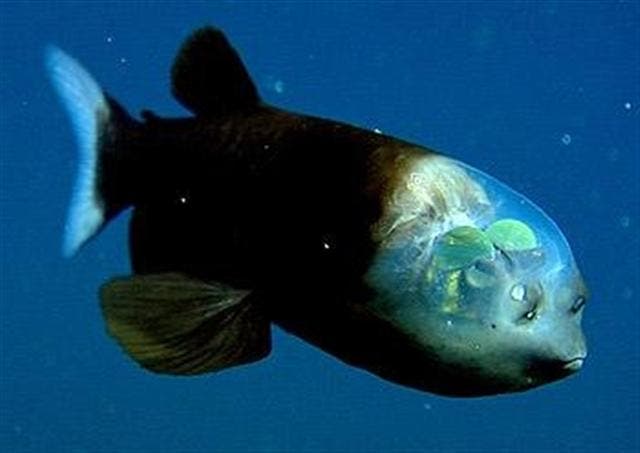
The Barrel Eye is an incredible species named for its barrel-shaped, tubular eyes, which are generally directed upwards to detect the silhouettes of available prey. The eyes can also turn forward.
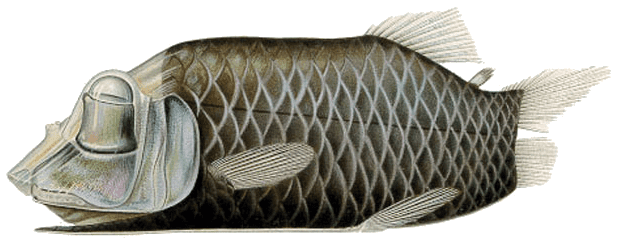
To better serve their vision, barreleyes have large, dome-shaped, transparent heads, arguably allowing them to collect any bit of light that might stumble their way, which is crucial at the depths they inhabit: 400–2.500 m deep. They reproduce by massively ejecting eggs and sperm, which are buoyant. The larvae and juveniles drift with the currents — likely at much shallower depths than the adults, and as they grow, they drift deeper.
For decades, scientists believed the barrel eye’s strange tubular eyes were fixed in place. Only in 2009 did submersible footage reveal they can actually rotate inside the transparent dome, giving the fish a panoramic view of its world. The eyes are tinted green, thought to filter out sunlight from above so the fish can focus on the faint bioluminescence of drifting prey.
6. The Dumbo Octopus
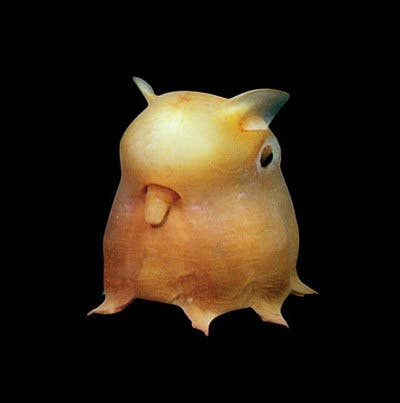
The Dumbo octopus looks like, well, you could say it looks like Dumbo, Disney’s elephant… except it doesn’t. It is one of the deepest living octopuses, inhabiting the oceans at depths between 3,000 and 7,000 meters (9,800 to 23,000 feet). There are 17 species recognized in the genus
They can flush the transparent layer of their skin at will and are pelagic animals, measuring under 2 meters (7 feet). The Dumbo octopus consumes food in a unique way: it swallows it whole, which differs from the way all other octopuses do it. Unlike other octopus species, it does not have an ink sack and is also uncapable of changing color. Researchers aren’t sure how it avoids or escapes predators at all.
In the pitch black, inky defenses are useless — so the Dumbo octopus never evolved them. Instead, it glides silently, a pale shape drifting in the abyss. Females can even carry eggs at different stages of development, releasing them one by one whenever conditions are right — a flexible survival trick in an unpredictable environment.
7. The Giant Isopod
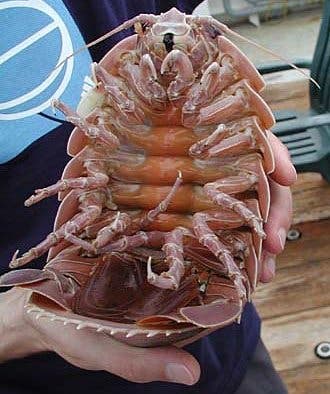
Let’s change things up a little and look at this species — well, group of species actually. A giant isopod is any of the almost 20 species of large isopod related to shrimps and crabs. They average between 20-36 centimeters (0.75 – 1.1 feet), but can occasionally grow beyond that. They have seven pairs of legs, the first of which are modified into maxillipeds (leg-like mouthparts) to manipulate and bring food to the four sets of jaws. They’re pretty similar in appearance and overall behavior.
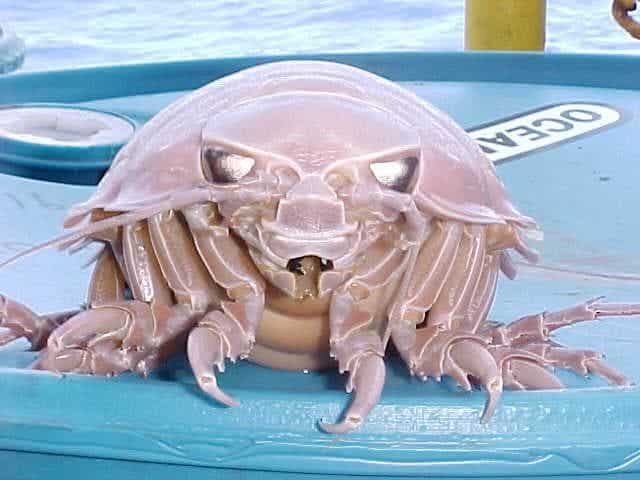
They’re also “living fossils” like the goblin shark — similar creatures were found in the fossil record 160 million years ago. They can be found on the bottom of deep seas scavenging any food that may fall from the shallow waters or hunting anything that’s smaller or slower than them. When they find abundant food, they can gorge themselves to the point of compromising their locomotive ability.
Unfortunately for them, food is not very abundant in their natural environment — and they have to spend a lot of time finding it.
8. Stargazer
Unlike many of the creatures here, the fish commonly called “stargazer” also live in more shallow areas. The family includes about 51 species and have a distinguishable upward-facing mouth.
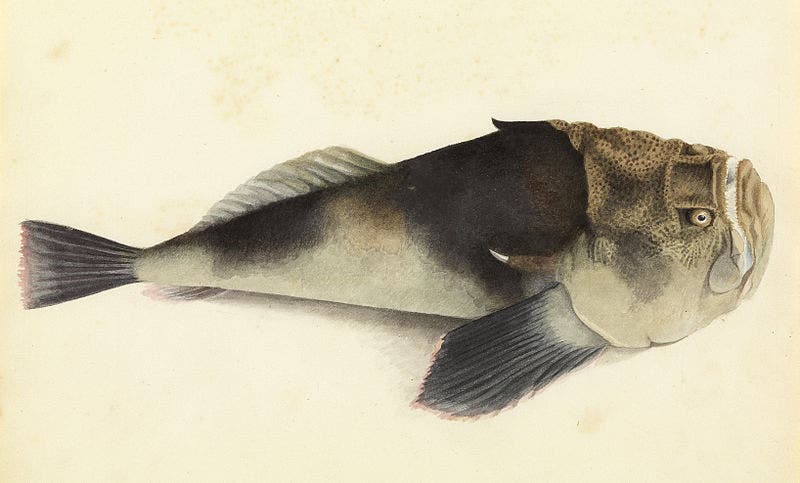
They usually bury themselves in the sand and leap upwards to attack their prey as it swims by. The thing is, even if they’re not directly successful, they are poisonous and can track their injured prey down. Also, they are able to deliver electric shocks to stun their prey. They are some of the few marine bioelectrogenic bony fishes.
9. The Hatchetfish
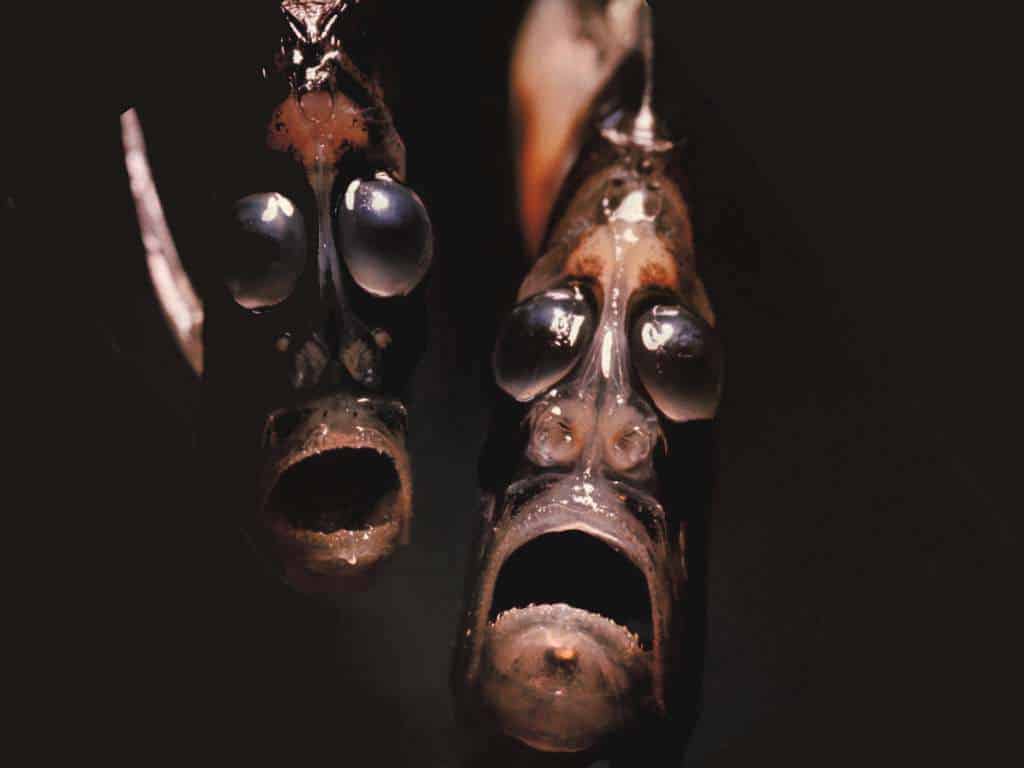
Deep-sea Hatchetfish should not be confused with freshwater hatchet fishes, which are not related to them. They just share the name and that’s pretty much it — we’re interested in the deep sea creature.
They are small deep-sea fishes that have evolved a peculiar body shape. Their body is very compressed laterally, somewhat resembling a hatchet, hence the name. Given the depths at which they live (50-1,500 meters), their tiny bodies have adapted to the pressure.
They may look scary, but when you look at them, don’t forget that they’re really small in size, almost never measuring over 10 centimeters. Their scales are delicate and silvery.
The marine hatchet fish is also endowed with bioluminescent properties, which allow it to evade predators lurking in the depths below — it’s more of a defensive ability rather than an offensive one. It uses a technique called counter-illumination that enables it to match the light intensity with the background.
10. The Chimaera
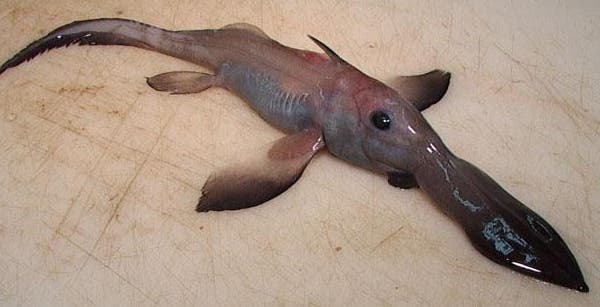
Chimaeras are cartilaginous fishes. Wait a minute: sharks are cartilaginous fishes, and the chimeras do look like sharks, so aren’t they sharks? Well no — not really. Based on the fossil record, scientists believe that they were once really abundant in shallow waters as well, but now, they’re mostly reserved for deep waters. They became genetically separated from sharks nearly 400 million years ago and have remained isolated ever since. You could say that they’re more closely related to sharks than fish, however.
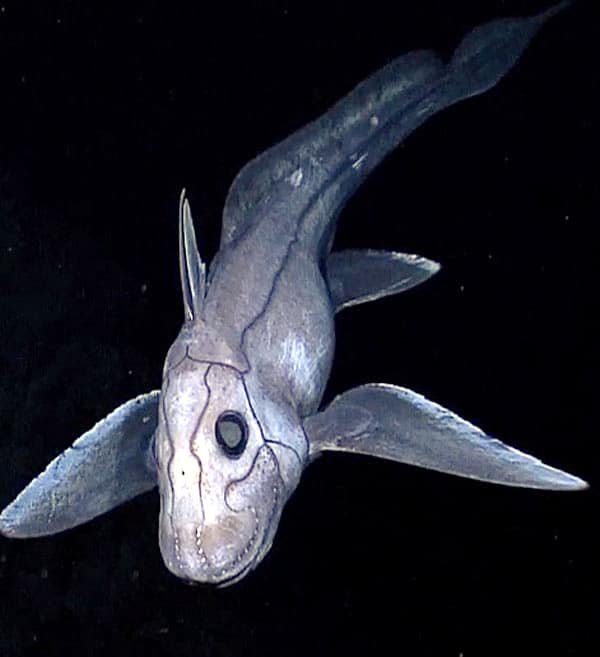
They live in temperate ocean floors down to 2,600 m (8,500 ft) deep, with few occurring at depths shallower than 200 m (660 ft). They lack sharks’ many sharp and replaceable teeth, having instead just three pairs of large permanent grinding tooth plates, and they are the only vertebrates to retain traces of a third pair of limbs. Not all of them look as eccentric as the one above, though. Some species, such as the one above, have modified their snouts, transforming them into sensory organs capable to detect prey by sensing its electrical field.
11. The Colossal Squid
Not to be confused with the Giant Squid, the Colossal Squid is the largest squid species, growing up to 12–14 m (39–46 ft) long. It is also the largest known invertebrate.

Not much is known about them, but they dwell at depths ranging from a few hundred meters to at least 2.200 kilometers. They are so big that they probably caused the belief in the Kraken — a legendary sea monster of giant proportions that is said to dwell off the coasts of Norway and Greenland. They are the preferred prey of a number of whales.
They have a small metabolic rate and probably rely on ambush to hunt their prey, using their big eyes to scout. The method of reproduction was not observed, but it is known that females are much larger than males, something not uncommon in invertebrates.
12. The Dragonfish

Dragonfish are small deep sea creatures. While they may look extremely fierce and dangerous, they measure only 10-20 centimeters. However, while they are usually found at depths of 2 kilometers, they start their life near the surface, as their eggs are buoyant.
Like many other deep sea creatures, it eventually becomes capable of producing its own light through bioluminescence when it is ready to move on to the deep sea. One of its many light-producing photophores can be found on a barbel attached to its lower jaw, which it most likely uses for hunting. I’m a broken record, I know — but not much is known about this species.
Remarkably, recent research has found that these deepsea creatures even camouflage their teeth, making them transparent — and they do this by using nanocrystals.
13. The Fangtooth
They are among the deepest-living fish, found as far as 5,000 m (16,400 ft) down. They sometimes hunt in small groups, but more often they do so alone. However, they’re not the most perceptive creatures, relying on luck to bump into something edible. The smaller teeth and longer gill rakers of juveniles suggest they feed primarily by filtering zooplankton from the water.
They’re also small, rarely growing over 20 centimeters, and like many miniature beasts of the abyss, they feature disproportionately large teeth. The function of these teeth is offensive – basically, in the extremely harsh environment in which they live, anything must be considered a meal — or a predator. Big teeth equal big weapons. The fangtooth has proportionately the largest teeth of any fish in the ocean — but still, even if, in all absurdity, they would stumble upon a human, they would be pretty harmless.
Fangtooths are known to be robust when compared to many other deep-sea fish, surviving for months when captured and placed in aquariums. Again, I really wish that people would stop trying to take these fish out of their environments and put them somewhere on display. They can’t survive this treatment, and it’s a slow, painful end for the unfortunate creatures.
These are just a few of the fascinating creatures that inhabit the deep sea. Hopefully, if this article has fulfilled its purpose, you understand that they are not monsters or freaks — they are adapted to their extreme environment (hundreds of bars of pressure, small amounts of oxygen, very little food, no sunlight, and constant, extreme cold). Extreme environments require extreme adaptations. Many of them rely on food falling from above, and for them, there are mostly two types of creatures: things you can eat, or things that can eat you. Sometimes it’s hard to draw a line between the two.
Humans have explored less than 2% of the ocean floor, and dozens of new species of deep-sea creatures are discovered with every dive.
This article was originally published in March 2023 and has been edited for additional clarity and more information.
